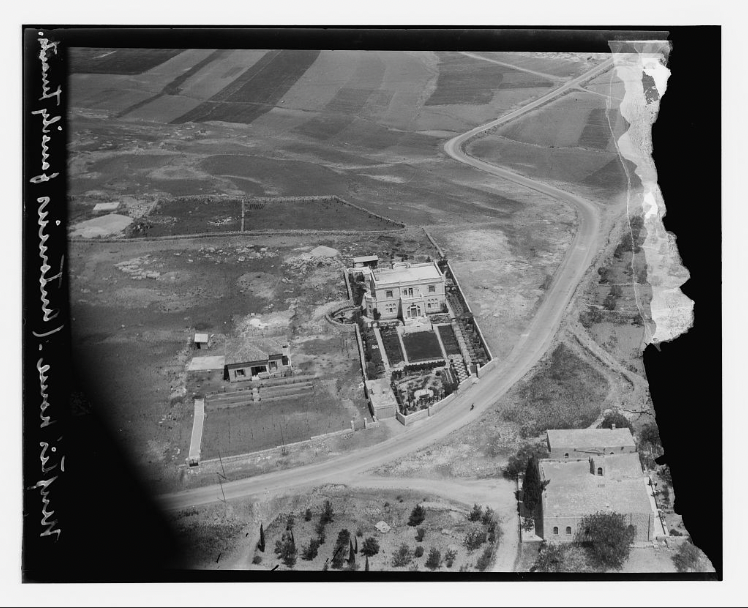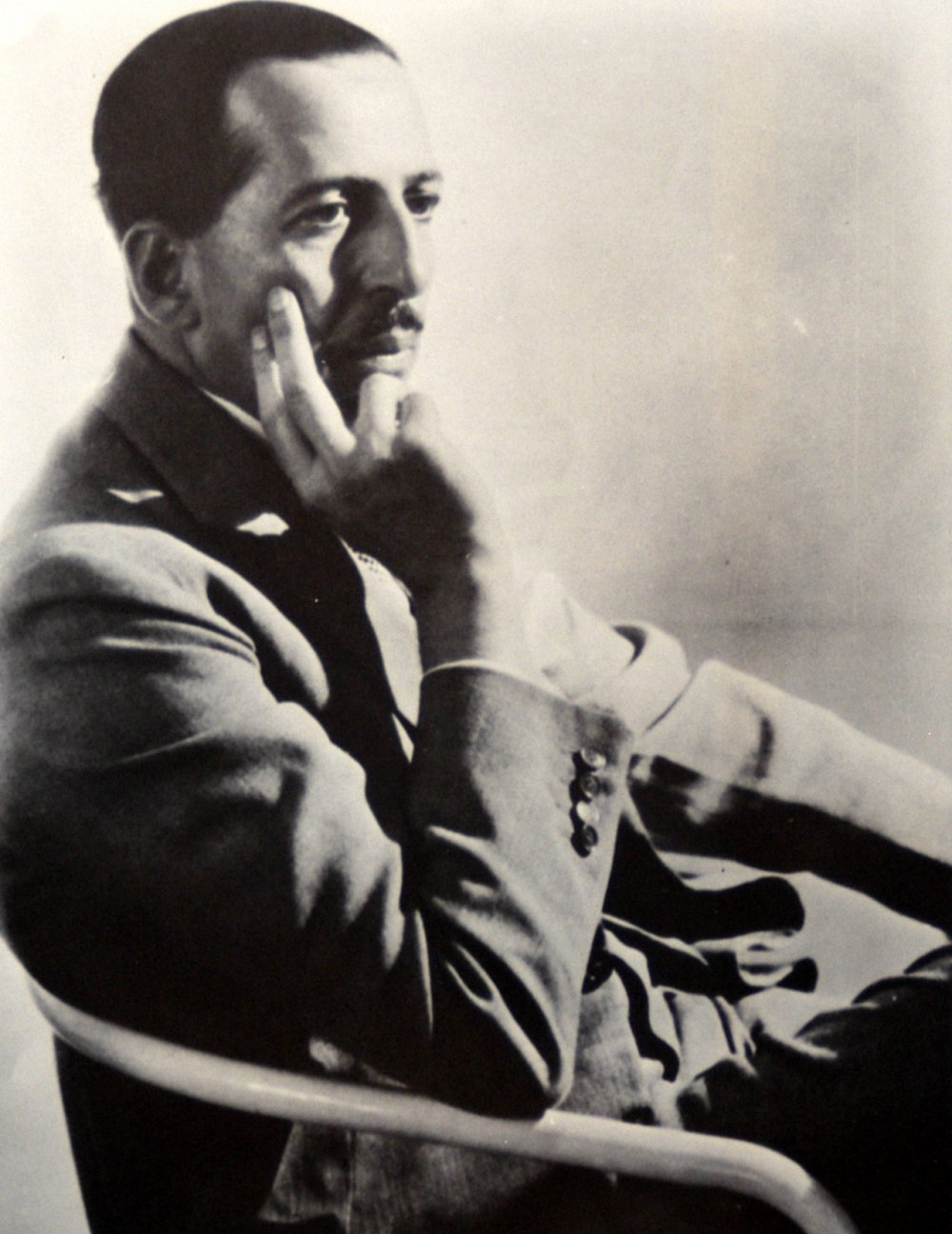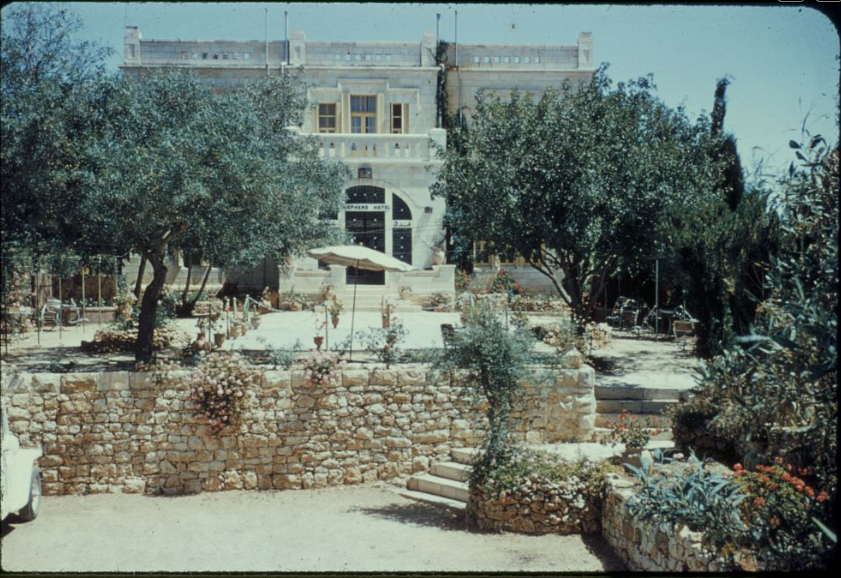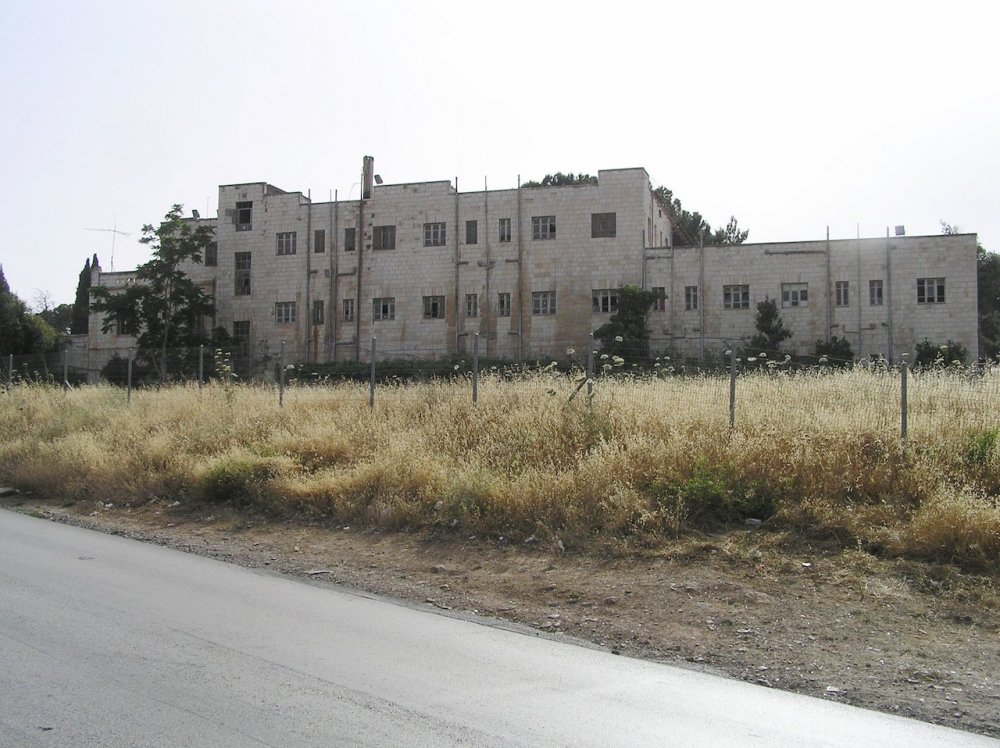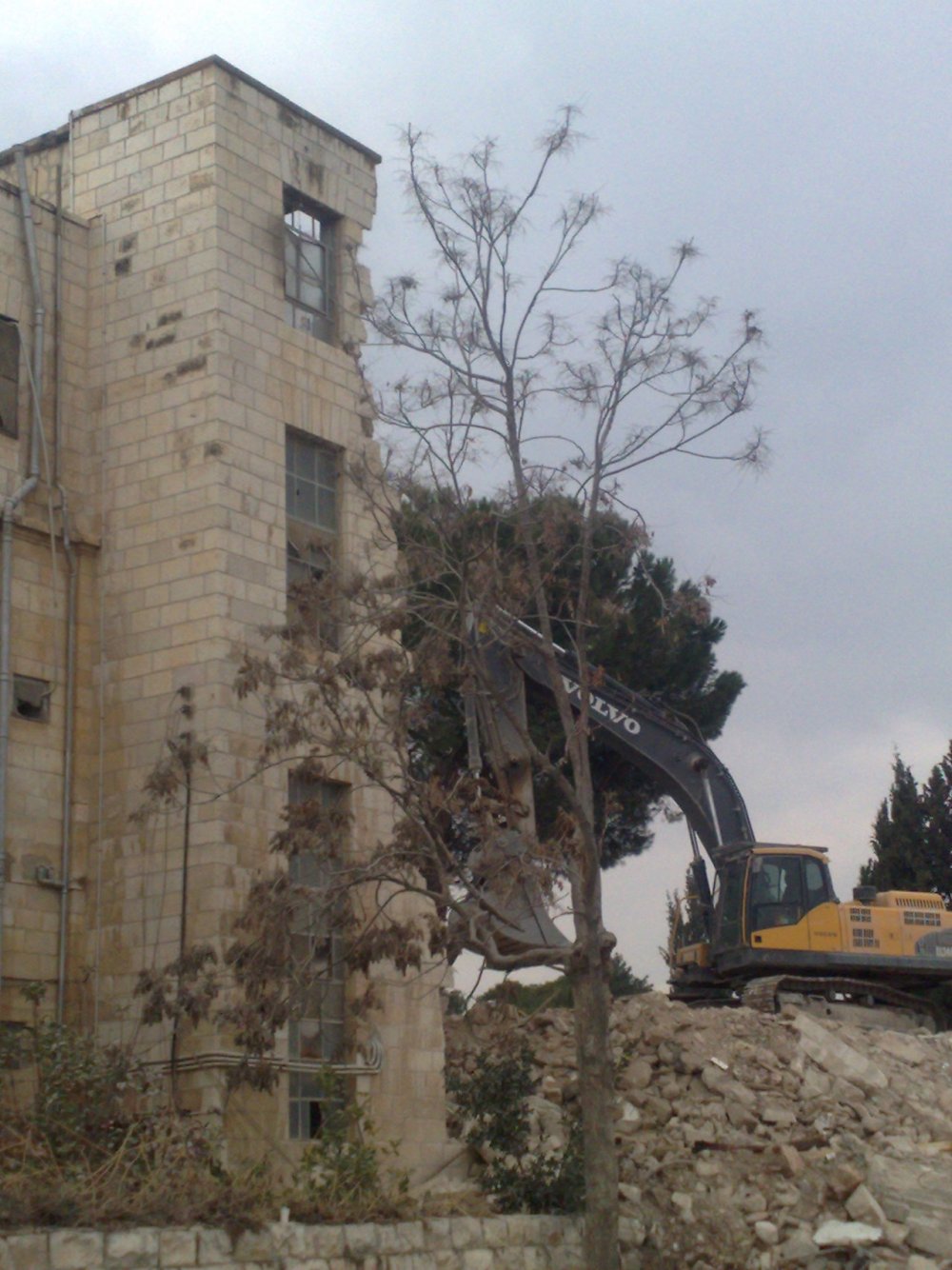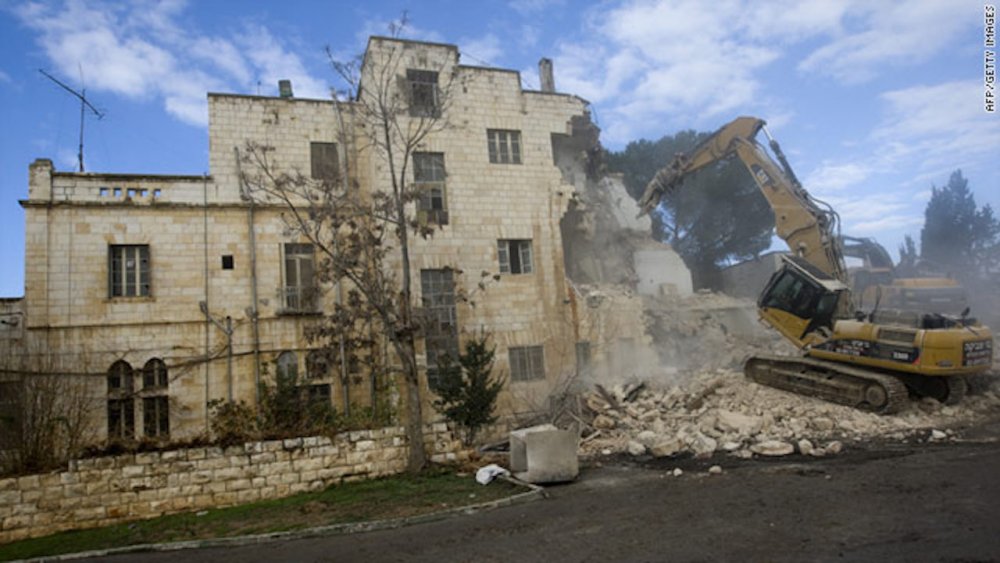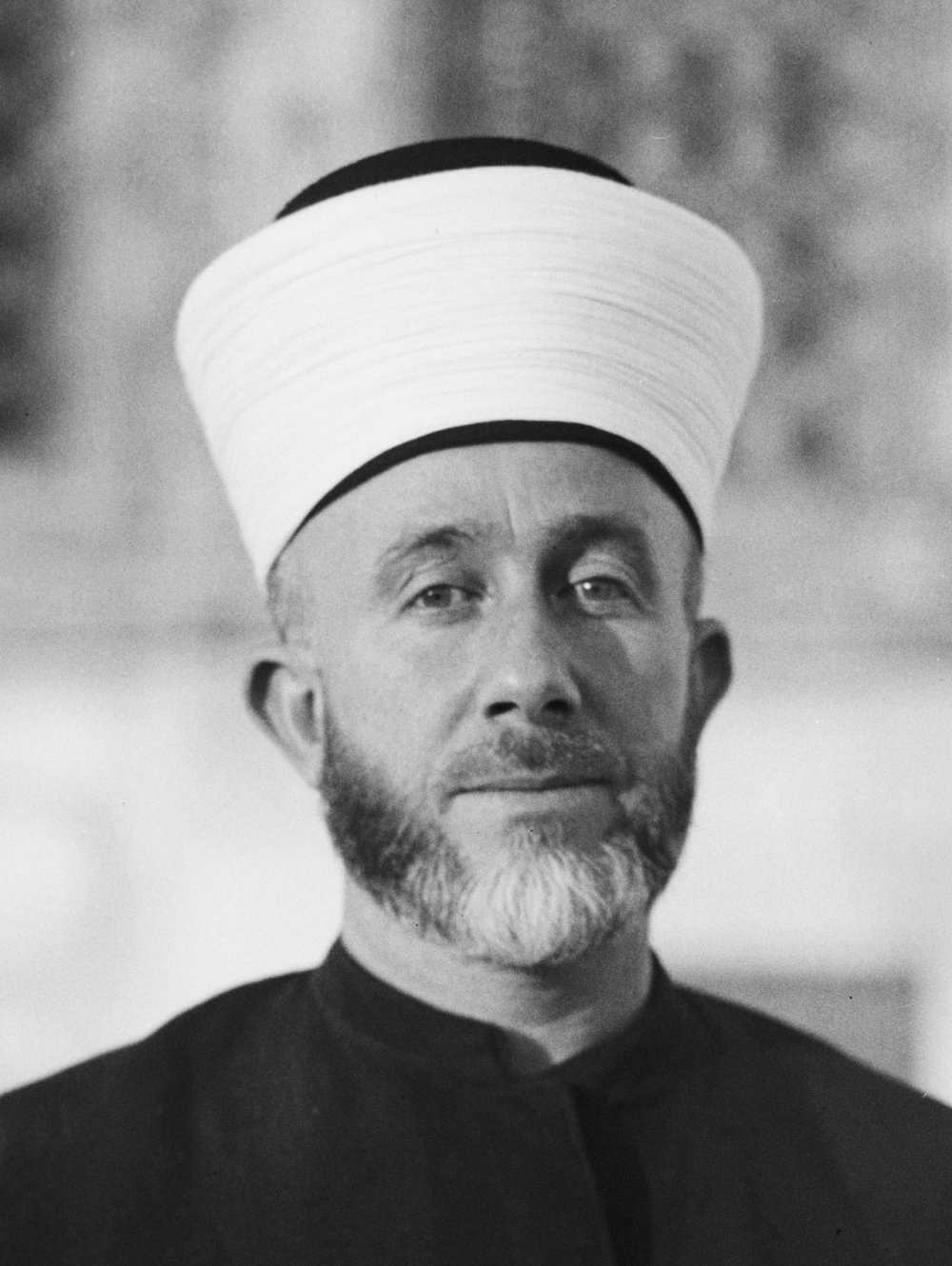A House of Many Scandals
Amin al-Husseini’s Dream Home, Karm al-Mufti: An Elegant Residence during the Mandate Bulldozed by Israel
Snapshot
Built in the early 1930s for one of Jerusalem’s most prominent nationalist leaders, Hajj Amin al-Husseini, the grand villa that once sat on a green plot of land in Sheikh Jarrah known as Karm al-Mufti (the Mufti’s vineyard) and that served as the site of countless luxurious parties hosted by the house’s primary residents, George and Katy Antonius, was demolished by Israel in January 2011 to make room for Jewish settlement units. Once a landmark of Jerusalem’s affluence and architectural beauty in the early 20th century, the structure underwent radical transformations since 1948 that diminished the grand residence—it was turned into a soldier and police base, a hotel for pilgrims, and an Israeli administrative building—and that culminated in its demolition and replacement by a series of Jewish housing units with a three-story parking lot in the heart of Palestinian Jerusalem.
Before Israel demolished it in January 2011, Sheikh Jarrah’s historic Shepherd Hotel was a controversial site for a number of reasons. For one, it was a “bone of contention” between former US president Barack Obama and then Israeli prime minister Benjamin Netanyahu in 2009 regarding the latter’s plan to demolish it for the construction of 20 Jewish housing units.1 It also deepened the wedge between more progressive Israelis and those farther on the right. For example, while Elisha Peleg, chairman of the Likud faction in the Jerusalem Municipality, stated that the construction of the settler units would “strengthen the Jewish foothold in east Jerusalem” as it is “in need of many housing projects to lower apartment prices” (see The Three Israeli Settlement Rings in and around East Jerusalem: Supplanting Palestinian Jerusalem), Peace Now Secretary-General Yariv Oppenheimer condemned the demolition as a step that would allow the “extreme right to take over east Jerusalem like thieves in the night. The settlers, with the government’s backing, are hurting Israel’s international status and destroying any chance of a peace agreement.”2
The stately villa was built by Hajj Amin al-Husseini, one of the founders of the anti-Zionist Palestinian nationalist movement in the early 20th century and arguably one of the city’s most contentious leaders—though he never lived in it. The luxury residence, built by a Jewish engineer, was home to the famous Antoniuses, George and Katy, who held many lavish parties with a range of influential guests in the mufti’s home. Indeed, the house apparently “served as the site of parties, forbidden loves and political intrigues.”3
But perhaps the most enduring aspect of the structure’s illustrious history is that it serves as a microcosm of Jerusalem’s Palestinian story. What once stood as an icon of the city’s Palestinian affluence and architectural splendor in the face of Zionist erasure—both as al-Husseini’s home and as the Shepherd Hotel—finally fell to Israeli demolition. What remains, as elsewhere in the city, is the building’s elegant facade and its intimate stories, preserved in people’s memories and in a trove of archival materials.
Karm al-Mufti: The Mufti’s Dream Home
In the 1920s, while Jerusalem’s prominent families were building their family homes in various New City neighborhoods (see The West Side Story, Part 1: Jerusalem before East and West), al-Husseini embarked on a similar project in Sheikh Jarrah, where the Husseinis owned prime real estate directly north of the Old City. But despite his family’s wealth, al-Husseini did not have enough money4 to complete the construction of his dream home on the 38,132 square meter property.5 So he commissioned Baruch Katinka—a Jewish engineer, member of the Haganah, and partner in the Albina Katinka Dunia construction company—to build the house at a low cost. Israeli historian Moshe Hananel believes that the construction company agreed to this because it was also building the luxurious Palace Hotel for the Supreme Muslim Council (headed by al-Husseini). The mufti’s dream home thus “served as a kind of ‘hostage’ to ensure that money for the Palace Hotel would continue to come in and that labor relations would remain satisfactory.”6
Once it was complete, the mufti didn’t move in to what became known as Karm al-Mufti (the Mufti’s vineyard). Instead, his personal secretary, Lebanese-born George Antonius, and his Egyptian Lebanese wife, Katy Nimr, took up residence there.7 The couple were among Jerusalem’s most influential figures throughout the colonial British Mandate. Beyond his career as a diplomat who worked as a civil servant of the Government of Palestine in Jerusalem, George was also a renowned historian, having authored The Arab Awakening in 1938—a critical treatise on the rise and development of Arab nationalism that he wrote while living in the mufti’s house.8 That he also served as the mufti’s personal secretary earned George considerable influence in the Palestinian nationalist movement and among British and Zionist figures. Indeed, David Ben-Gurion was said to have held several meetings with him.9
When George died in 1942 at the age of 50, Katy continued to live in the villa and host the couple’s lavish parties in her salon. The Times honored her legacy in a 1984 obituary and referred to her many soirees as “the focal point of Jerusalem social life,” attended by journalists, officials, and officers, as well as diplomats and political figures. Her parties were evidently “elaborate affairs” featuring “evening dress, Syrian food, and drink, and dancing on the marble floor.”10 As the founder of an orphanage in the Old City, Dar al-Awlad, Katy was also known on occasion to invite the children to her parties.
Katy also took a lover in the years after her husband’s death and her residence in the villa. The General Officer Commanding of the British Forces, Palestine & Trans-Jordan (1946–47), Evelyn Barker, attended many of Katy’s parties at the villa, while he himself lived in the Schocken mansion not far away in Rehavia.11 The lovers exchanged many letters and were known to be anti-Zionist. In fact, Katy’s influence over senior British officials in Palestine who visited her salon roused concern among Yishuv leaders seeking to secure British support in the final years before 1948.12 But in the wake of the July 1946 bombing of the King David Hotel by Zionist extremists (see The West Side Story, Part 2: The Darkening Horizon: Jerusalem’s New City under the British Mandate), Barker is said to have made a statement that led to his dismissal: “We will be punishing the Jews . . . by striking at their pockets and showing our contempt of them.”13
The couple continued to exchange letters after Barker was sent to London from Jerusalem. But at the beginning of 1947, the Irgun blew up a house close to Karm al-Mufti, which led Katy to flee. The Irgun subsequently raided the villa and confiscated its belongings, including letters and photographs which ended up in Israeli archives.
In the lead-up to the Nakba, the empty villa served different wartime purposes. Scottish Highlanders were stationed in the house, and in April 1948, when a convoy of Jews was attacked by Palestinians on its way to Hadassah Hospital in retaliation for the Deir Yassin massacre (see The West Side Story, Part 3: From Bourgeois Comfort to Untenable Peril: The Emptying of the New City), the injured were taken to the villa to be treated.14
A Palestinian Landmark Confiscated by Israel
Following the 1948 War, and like much of what became East Jerusalem, Karm al-Mufti fell under Jordanian rule (see The West Side Story, Part 4: The Erasure of the New City and Its Transformation into Jewish West Jerusalem). Jordanian authorities added to the villa and turned it into a hotel for pilgrims known as the Shepherd Hotel; some observers thought the addition obscured the building’s architectural beauty.15
Between Jordan’s official annexation of the West Bank, including East Jerusalem, in 1950 and Israel’s occupation of the territory in 1967, the iconic villa remained a central fixture in the Palestinian side of the city. But when Israel occupied East Jerusalem in 1967, it confiscated the hotel and transferred it to the Custodian of Absentees’ Property (see How Israel Applies the Absentees’ Property Law to Confiscate Palestinian Property in Jerusalem). The structure was subsequently used by the Israeli Ministry of Justice and as a district courthouse. Al-Husseini, who was only allowed to visit Jerusalem briefly in early 1967, mere months before the war, died in Beirut in 1974. It is unknown whether he was able to visit his beloved dream home-turned-hotel.
In 1982, the building was designated for residential use by the Jerusalem District Committee of the Interior Ministry under Plan 2591. And in 1985, the custodian sold the building and the land around it to Irving Moskowitz, a Jewish American businessman and supporter of settler movements in the city—especially the extremist Ateret Cohanim settler organization—for $1 million.16 Moskowitz, who did not appreciate the Christian connotation of its name, renamed it the Sheffer Hotel. Katy had died one year earlier in Beirut, and it is perhaps fortunate she did not learn of her home’s fate.17
The First Intifada broke out in 1987, at which point the Israeli Border Police leased the building for the next 15 years. But during the nearly five-year Second Intifada, which began in 2000, the police relocated to another part of the city, and Moskowitz began promoting the plan to turn the area in Sheikh Jarrah into one for Jewish housing settlement.
The Road to Demolition
In March 2009, the plan to build 20 apartment units for Jewish settlement, in addition to a three-story parking lot, appeared on the agenda of the licensing committee of the Jerusalem Municipality. It reappeared and was approved in July of that year,18 though the Obama administration urged Israel to freeze settlement construction. Notwithstanding, the Local Planning Committee approved the request, which irked the US administration and further soured relations between Obama and Netanyahu.19 The announced plan for the demolition was then delayed for six months due to a legal challenge presented by a son of the late Faisal al-Husseini, former Palestinian Authority Minister for Jerusalem Affairs and cousin of Hajj Amin. The representative of the Husseini family claimed that the family owned part of the parking lot that would serve as the entrance for the planned housing project. Not surprisingly, the court rejected the family’s claim, and the demolition went ahead as planned.20
Israeli authorities began to demolish the historic building on Sunday, January 9, 2011, sparking local and global condemnation.21 Even UN Secretary General Ban Ki-moon said the demolition “only serves to heighten tensions.”22 The bulldozers arrived at 5:00 a.m. By noon, the right half of the four-story structure that was built by the Jordanians was reduced to a pile of rubble, while the facade of the left part of the building—the former entrance to the mufti’s villa—was preserved for its historical value.23
That afternoon, crowds of activists arrived at the site to protest the demolition, including members of the Sheikh Jarrah Solidarity Movement, who announced: “Building a new settlement in Jerusalem goes against all of Israel’s interests and threatens to destroy whatever is left of Israeli diplomacy and ignite Jerusalem once again.”24
Alongside protesters, Daniel Luria, spokesperson for Ateret Cohanim, was at the site passing out fliers showing al-Husseini’s alleged connections to the Holocaust due to his meeting with Hitler in late 1941.25 “It’s magnificent, this is beautiful,” Luria said. “Call it poetic justice, call it historic justice, this is something special . . . The symbolism of the destruction of the house of a Nazi is rather unique.”26
The demolition even led to one of the rare instances of US public criticism of Israeli policies on occupied Palestinian lands. Secretary of State Hillary Clinton said on the day of the demolition: “This disturbing development undermines peace efforts to achieve the two-state solution,” and it “contradicts the logic of a reasonable and necessary agreement between the parties on the status of Jerusalem.”27 This, despite the statement by one of Netanyahu’s spokespeople that the Israeli government was allegedly not involved in the demolition decision, that it was a “private matter,” and that “there should be no expectation that the State of Israel will impose a ban on Jews purchasing private property in Jerusalem.”28
As for the Palestinian response, representatives of both the Palestinian Authority (PA) and the Palestine Liberation Organization (PLO) spoke out in condemnation at the grave injustice to Jerusalem’s Palestinian identity and the site of a future Palestinian capital. Yasser Abed Rabbo of the PLO said the demolition would have “grave repercussions” for the region and that “actions of this Israeli government prove that it does not want peace . . . Israel is only interested in creating new facts on the ground.” The PA-appointed mufti of Jerusalem, Sheikh Muhammad Ahmad Hussein, declared that the demolition was part of Israel’s “arbitrary actions to Judaize Jerusalem and wipe out its Arab and Islamic character.”29
The Legacy of Karm al-Mufti
The magnificent villa once admired as the mufti’s vineyard no longer exists as al-Husseini envisioned it when he commissioned Katinka to build his dream home in the heart of Jerusalem. It is no longer a site of luxurious parties attended by the city’s elite, as it was during the long residence of George and Katy Antonius in the house. And it no longer stands as a hotel for pilgrims, with its unsightly extension built by the Jordanians. But even Israeli authorities, settler organizations, and their funders recognized that the facade of Karm al-Mufti—of the iconic Shepherd Hotel—was resplendent and worth preserving.
In other words, despite the ceaseless attempts by Israel and its benefactors to erase Palestinian Jerusalem and replace it with Jewish-only settlement, and even though settlers now return to their homes through that magnificent entryway and park their cars in their three-story parking lot, the Palestinian story of Karm al-Mufti remains. It remains in the collective memory of the city’s Palestinians—indeed, of Palestinians everywhere—as the home of a member of an illustrious Jerusalem family, himself a national figure who opposed Zionist machinations before Israel was established on the ruins of Palestine; it remains preserved in state archives from the US to Israel; and it remains in the litany of publications and correspondences exchanged between world leaders condemning Israeli settlement expansion in Jerusalem.
Al-Husseini would have been appalled to learn that his dream home would be so carelessly demolished, but perhaps he would find comfort and pride in its enduring legacy.
Notes
Nir Hasson, “Jay Gatsby in Jerusalem,” Haaretz, September 3, 2009.
Ronen Medzini, “East Jerusalem: Construction of Jewish Neighborhood Begins,” Y Net News, January 9, 2011.
Hasson, “Jay Gatsby in Jerusalem.”
Hasson, “Jay Gatsby in Jerusalem.”
Farah Issam, “How Israel Is Planning to Evict Palestinians from East Jerusalem to Make Way for ‘Silicon Wadi,’” The New Arab, August 20, 2021.
Hasson, “Jay Gatsby in Jerusalem.”
Hasson, “Jay Gatsby in Jerusalem.”
George Antonius, The Arab Awakening (London: Hamish Hamilton, 1938).
Hasson, “Jay Gatsby in Jerusalem.”
Wikipedia, s.v. “Women’s Literary Salons and Societies in the Arab World,” accessed November 30, 2023.
Keshet Rosenblum, “Mendelsohn Building Spurs Monumental Dilemma,” Haaretz, December 19, 2012.
Hasson, “Jay Gatsby in Jerusalem.”
Harry Defries, Conservative Party Attitudes to Jews, 1900–1950 (London: Frank Cass, 2001), 194.
Hasson, “Jay Gatsby in Jerusalem.”
Hasson, “Jay Gatsby in Jerusalem.”
Barak Ravid and Nir Hasson, “J’lem Planning Authority Okays Shepherd Hotel Plan,” Haaretz, March 24, 2010.
Hasson, “Jay Gatsby in Jerusalem.”
Mairav Zonszein, “Shepherd Hotel Demolished, To Be Replaced by Settlement,” +972 Magazine, January 9, 2011.
Medzini, “East Jerusalem.”
Melanie Lidman and Khaled Abu Toameh, “Haj Husseini’s Shepherd Hotel in East J’lem Demolished,” Jerusalem Post, January 9, 2011.
Joseph Dana, “Can the Demolition of Shepherd Hotel Be Good for Democracy?” +972 Magazine, January 11, 2011.
Shira Medding and Kareem Khaddar, “Israel Demolishes Part of Hotel in East Jerusalem,” CNN, January 11, 2011.
Lidman and Abu Toameh, “Haj Husseini’s Shepherd Hotel.”
Lidman and Abu Toameh, “Haj Husseini’s Shepherd Hotel”; Medzini, “East Jerusalem.”
For more about Hajj Amin al-Husseini’s meeting with Hitler in Berlin in November 1941, see David Kaiser, “What Hitler and the Grand Mufti Really Said,” Time, October 22, 2015.
Lidman and Abu Toameh, “Haj Husseini’s Shepherd Hotel.”
“Israel Demolishes Historic Hotel,” Al Jazeera, January 9, 2011.
Medding and Khaddar, “Israel Demolishes Part of Hotel.”
Lidman and Abu Toameh, “Haj Husseini’s Shepherd Hotel.”


